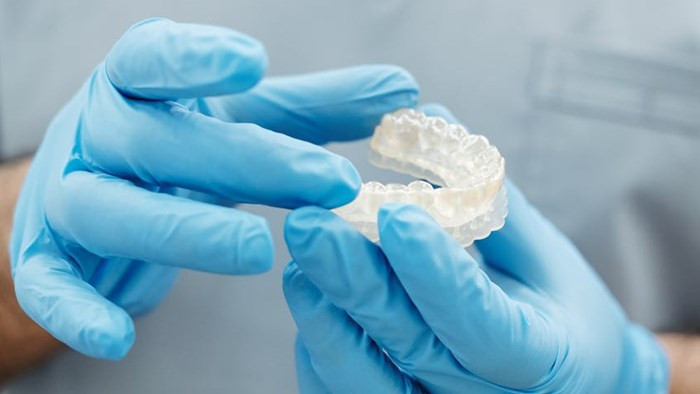Ceramic 3D printing is a step forward for dental products
Ceramic 3D printing is a step forward for dental products – Cheersonic
Due to its excellent biocompatibility, ceramic materials are recommended as the material of choice, ranging from dental restorations, implants to bone grafts. Unlike metals, ceramic materials do not suffer from ion release or corrosion issues, and have long-term stability in both soft and hard tissues. In addition, ceramic materials have also shown significant advantages when making restorations, allowing restorations to look as natural as possible in the long term. From an aesthetic point of view, all-ceramic restorations have a distinct advantage over metal in optically mimicking natural teeth; in the case of gingival recession, there are no grey shades in the gingival area and implants.
Often referred to as “ceramic steel”, zirconia is commonly used in restorative dentistry to restore missing teeth or dental material, through teeth to support crowns, fixed dental prostheses (FDP) and defective restorations (such as occlusal veneers) to repair. Zirconia can also replace missing teeth with dental implants and implant-supported restorations.

Zirconia is used to repair missing teeth or dental material by means of tooth support crowns, fixed denture restorations and defect restorations.
Now, the CAM (Computer Aided Manufacturing) program for machining zirconia is processed by subtractive techniques, that is, the zirconia parts mentioned above are made from prefabricated zirconia blanks in a pre-sintered state, the so-called white body state processed. In this state, the inherent strength of zirconia is low. Due to this fact, thin bezels can break during subtractive machining, leading to noticeable differences between the designed and manufactured parts.
For this reason, thin bezels and edges often have to be over-profiled in these areas to prevent edge breakage during machining. However, this also results in a lot of post-processing work in these areas. Since crown margins and occlusal surfaces are a very important area of crown and bridge restorations, post-processing must be performed under a stereomicroscope, which is rather time-consuming and cost-intensive. In addition, occlusal fissures also require post-processing, since rotary instruments can only reproduce the classic conical fissure geometry to a limited extent.
With ever-increasing demands for aesthetics and performance, ceramic 3D printing emerged as a solution to meet the challenges of the dental field. It offers new degrees of design freedom, enabling complex 3D metal-free applications to be produced layer-by-layer while overcoming the technical limitations of standard ceramic processes.
Using 3D printing technology, there is no limit to the location of the milling blast and the thickness of the repair. Minimally invasive veneers can reliably produce minimally invasive veneers with very thin borders, feathered edges down to 100 μm, and better mechanical stability compared to milled veneers. In addition, since 3D printing can produce geometries that resemble the properties of occlusal surfaces, the aesthetics of monolithic restorations can be achieved.
For replacement of missing teeth, endoscopic screw implants are an appropriate treatment. Using lithographic ceramic manufacturing techniques, complex-shaped, patient-specific ceramic implants can be mass-produced with a high degree of repeatability. In such a production environment, the annual output of the machine can reach more than 60,000 pieces.
In addition, ceramic 3D printing technology provides different applications in the field of craniomaxillofacial surgery and the treatment of severe bone defects of the mandible. The challenge when treating such a large defect is that the bone itself cannot heal the defect without proper measures. Therefore, a two-pronged approach is proposed here, with a high-strength zirconia shell giving proper support during the healing phase, while the internal volume of the implant is made of bioabsorbable β-calcium phosphate (β-TCP). Practice has proved that ß-TCP has good osseointegration properties, and can significantly affect the growth of bones by selecting appropriate pore and support sizes. ß-TCP is reabsorbed by cells and replaced by newly formed bone, while the zirconia cage can remain in place due to its good biocompatibility.
Cheersonic is the leading developer and manufacturer of ultrasonic coating systems for applying precise, thin film coatings to protect, strengthen or smooth surfaces on parts and components for the microelectronics/electronics, alternative energy, medical and industrial markets, including specialized glass applications in construction and automotive.
